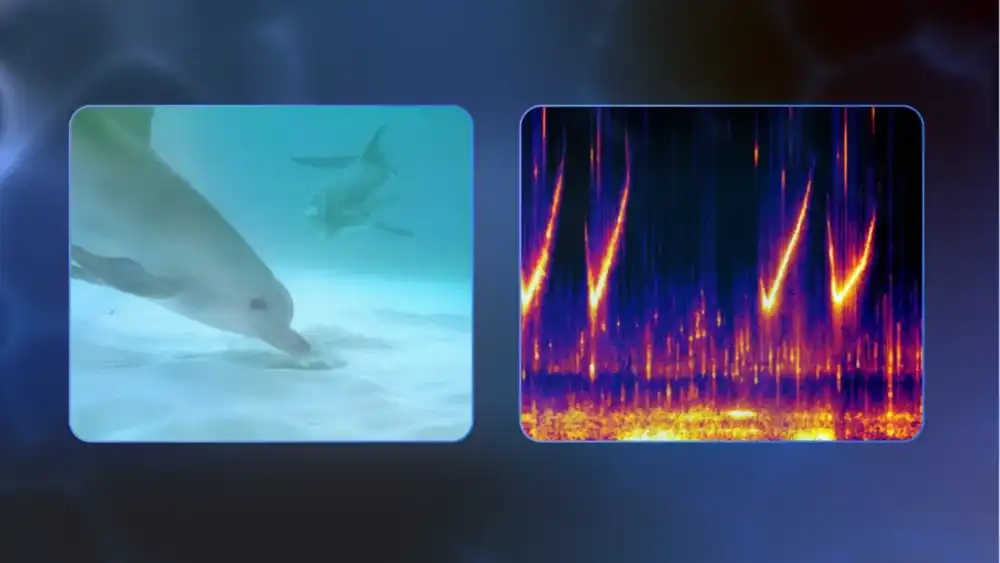Google is using AI to help humans talk to dolphins

A mother whistling to her calf (right), and a spectrogram visualizing the whistle (right); Image: Google/WDP
These days, it seems like no worker is safe from an AI replacement—even Dr. Dolittle.
Google’s AI research lab DeepMind yesterday unveiled a new AI model aimed at helping scientists translate dolphin vocalizations, with an end goal of allowing for basic communication between humans and dolphins.
Background: Dolphins are some of the smartest and most communicative animals on Earth, with social interactions so complex that researchers at the Wild Dolphin Project (WDP) have spent the last 40+ years attempting to decipher them.
In the process, WDP has amassed decades’ worth of dolphin audio and video, using it to tie certain sounds to behavioral aspects like courtships, unique names, and dolphin squabbles.
That’s where AI comes in. Using WDP’s massive dataset, Google researchers created a generative AI model called DolphinGemma that uses a special audio technology to tokenize dolphin vocalizations.
- DolphinGemma operates on an audio-in, audio-out model. So after being provided with a dolphin vocalization, the model does what human-centric language models like ChatGPT do—it predicts the next token.
- Once the model is completed and fine-tuned, those predicted tokens would ideally be sounds that a dolphin can understand.
Looking ahead…Researchers hope DolphinGemma will help tease out complex patterns, and eventually allow them to create a shared vocabulary between dolphins and humans to enable basic interactions.
Share this!
Recent Science & Emerging Tech stories

Science & Emerging Tech
| April 14, 2025Blue Origin to launch all-female space crew
🚀 Blue Origin’s latest commercial spaceflight is set to launch this morning, sending six women into orbit on the company’s New Shepard rocket.

Science & Emerging Tech
| April 11, 2025Scientists achieve the “impossible” with biggest brain map ever
🧠 For decades, scientists have struggled to make sense of the brain due to its mind-boggling complexity. But the purported impossible has now been achieved, according to a new study published in Nature.

Science & Emerging Tech
| April 9, 2025Samsung’s new vacuum lets you see incoming texts and calls
🌐 Samsung just introduced its newest friendly household robot vacuum cleaner, the Bespoke AI Jet Ultra. The smart appliance does more than just clean the floors: it's equipped with AI, Bluetooth, and an LCD display control panel for text messages and phone calls.
You've made it this far...
Let's make our relationship official, no 💍 or elaborate proposal required. Learn and stay entertained, for free.👇
All of our news is 100% free and you can unsubscribe anytime; the quiz takes ~10 seconds to complete